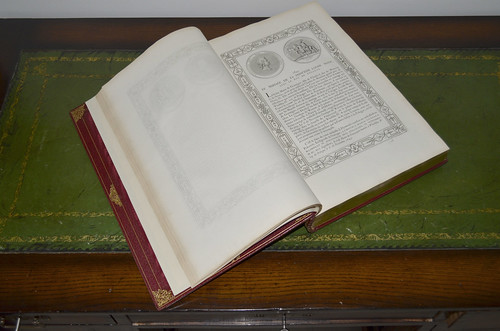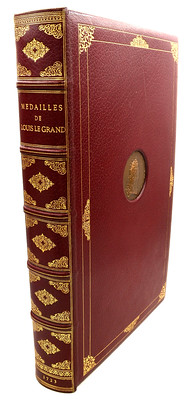
PREV ARTICLE
NEXT ARTICLE
FULL ISSUE
PREV FULL ISSUE
MEDALS OF THE SUN KING LOUIS XIVI didn't manage to get this into an issue before the sale (it took place this week), but here's an article from the Künker web site on one of the lots in their December numismatic literature sale. -Editor
Especially when it came to spreading his carefully conceived “image” throughout Europe, medals were ideal means. They were given as diplomatic gifts to envoys or sent to other rulers – according to their rank and importance in bronze, silver or gold. And often they did not receive single specimens but entire series, sometimes of more than a hundred of medals. The Académie invented and minted medals on all possible “glorious” occasions, whether it be a success in one of the Sun King’s numerous wars, an episode from Louis’ personal life, a technical advance or a new building. A single medal reports on a single event. But Louis produced not only a single one, but incredible amounts of them. Therefore, they tell the story of his reign – they are a histoire métallique. Well, actually they rather tell how the king would have liked others to perceive history. This becomes particularly apparent when the fortunes of war favoured France’s enemies: Great defeats were omitted, and the most insignificant victories celebrated on medals. In the case of some battle defeats, the medals even corrected the battle’s result in favour of France! In order to make the constantly increasing number of medals known all over Europe, in 1702 the Académie published “Médailles sur les principaux événements du règne entier de Louis le Grand, avec des éxplications historiques”; (=Medals on the most important events of the entire reign of Louis the Great with historical explanations). This work depicted and commented on all official medals of the king. It was an epoch-making idea with far-reaching implications. Because of this, even those who were not important enough to receive a series of hundreds of medals were able to admire the masterpieces of the propaganda of glory. And they loved doing that! Already the edition of 1702 was reprinted and translated all over Europe. In this way, the French medals – even though not in their minted form – were spread and then imitated. When it came to the self-presentation of rulers and their reign, even Louis’ enemies had no choice but to imitate him. That’s how much influence the court of Versailles had all over Europe!  The British numismatist Sir Mark Jones described the book on the entire medal history of 1723 as “an extraordinary work, unparalleled in magnificence and technical accomplishment either in contemporary Europe or in the history of the medal.” We can only agree with that! To read the complete article, see:
To read the earlier E-Sylum article, see:
 Wayne Homren, Editor The Numismatic Bibliomania Society is a non-profit organization promoting numismatic literature. See our web site at coinbooks.org. To submit items for publication in The E-Sylum, write to the Editor at this address: whomren@gmail.com To subscribe go to: https://my.binhost.com/lists/listinfo/esylum All Rights Reserved. NBS Home Page Contact the NBS webmaster 
|
